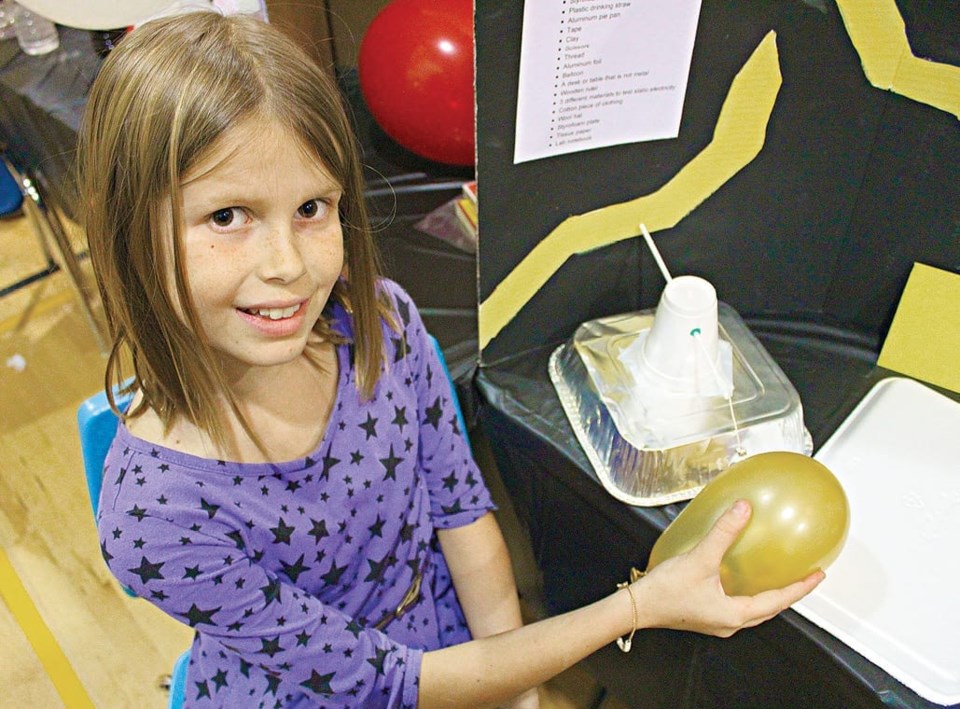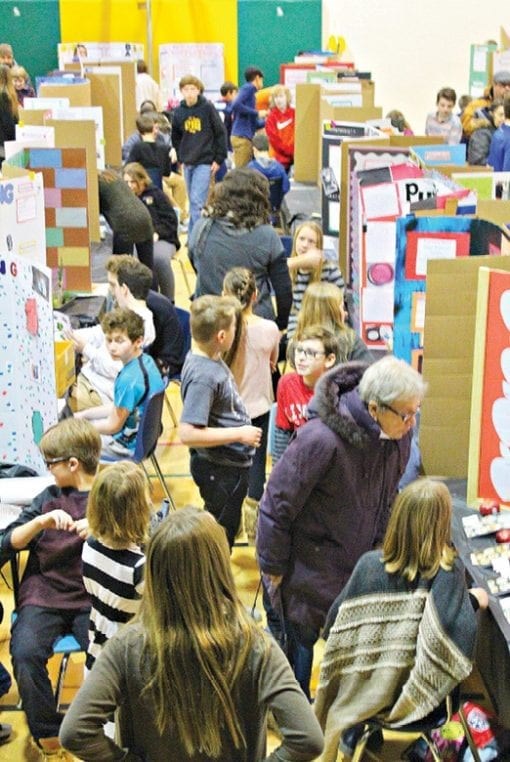
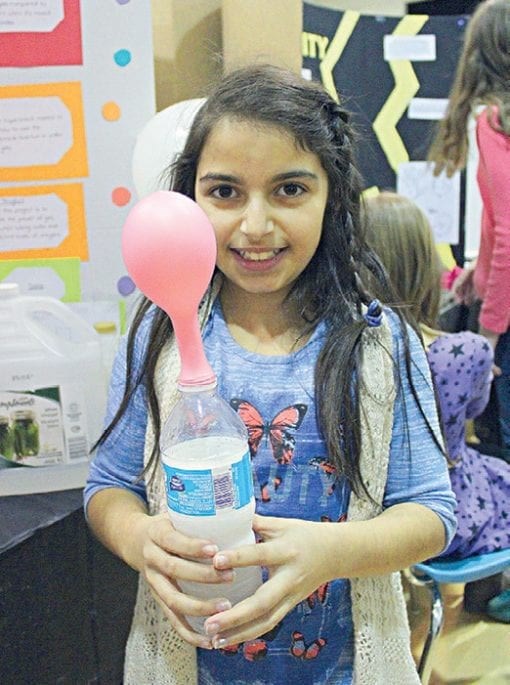
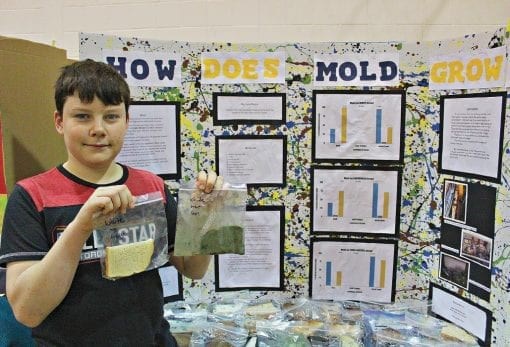
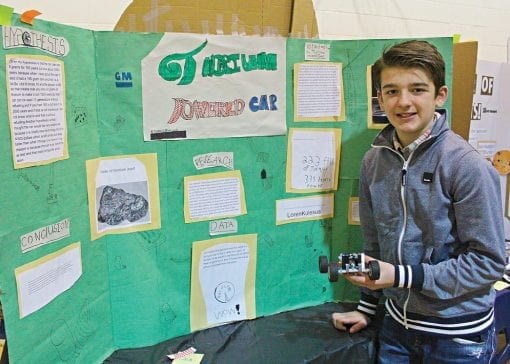
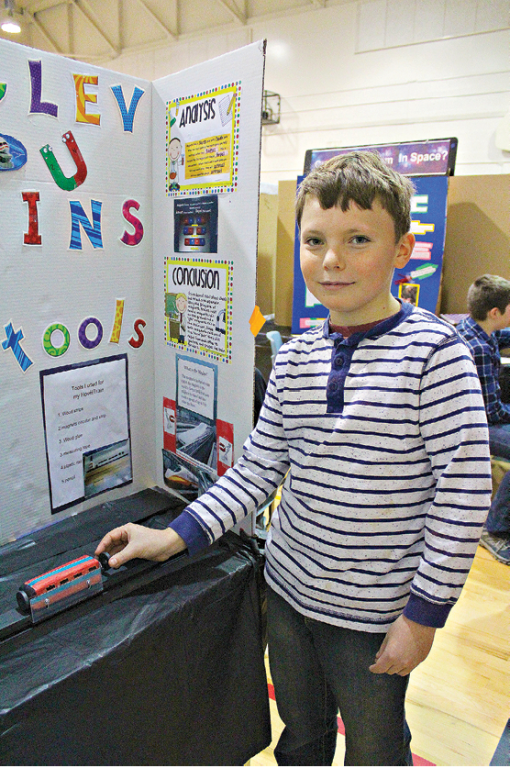
Photos, from top: Grade 6 student Jinja Shepherd explains her experiment on static electricity; the gym-packing crowd; Nasma Rashid with one of her self-inflating balloons; Ben Butler experiments with how temperature and moisture affect mold growth; Ethan Catherwood says thorium-powered cars would reduce greenhouse gas emissions; Jake Bossey explains how magnets can be used to make trains move. (NATE SMELLE PHOTOS)
BY NATE SMELLE The VOICE
The gymnasium at Glynn A. Green Public School was packed full of curious minds of all ages last Friday for the school’s annual science fair. This year’s fair featured the scientific explorations and innovations of 49 junior students (Grade 5 and Grade 6) and 52 intermediate students (Grade 7 and Grade 8). The students showcased their experiments and ideas throughout the space inviting guests to ask questions about their projects. Mingling with the family members and the public attending the fair were a team of judges looking to identify the competition’s best of the best. Those students are invited to participate in the Niagara Region’s 55th annual Science and Engineering Fair.
“The children do most of the project independently,” said Grade 7 teacher and science fair organizer, Maria Verwey.
“Of course they have a little guidance from their teachers, but they get to pick their own topic, so they come up with their own ideas. The kids have a lot of fun and they get to learn about something that they are interested in.”
Grade 5 student Nasma Rashid was especially excited about her science project, Self-Inflating Balloons.
Nasma said her experiment began when she questioned whether different types of vinegars would create different volumes of gas when mixed with baking soda. Carefully filling each empty balloon with the same amount of baking soda, Nasma attached each of the balloons to three different plastic bottles — one filled with apple cider vinegar, another with red wine vinegar, and another with white vinegar. Tilting the affixed balloons so that the baking soda mixed with the different vinegars, Nasma discovered that the more acidic the vinegar was the more gas it produced.
“The white vinegar made the balloons expand the most,” she said excitedly.
“Next was the red wine vinegar and then the apple cider vinegar. I really enjoyed doing the experiments. Science is a really cool way to learn new things.”
Other science projects investigated static electricity, solar heat, how mold grows under different temperatures, Thorium-powered cars and magnetic-powered trains.
Pelham resident Joanne Merritt came over to check out the kids’ science projects. She was thrilled to see so how enthusiastic the children were about their experiments.
“The kids worked so hard on their projects and they’ve all done an excellent job,” said Merritt.
